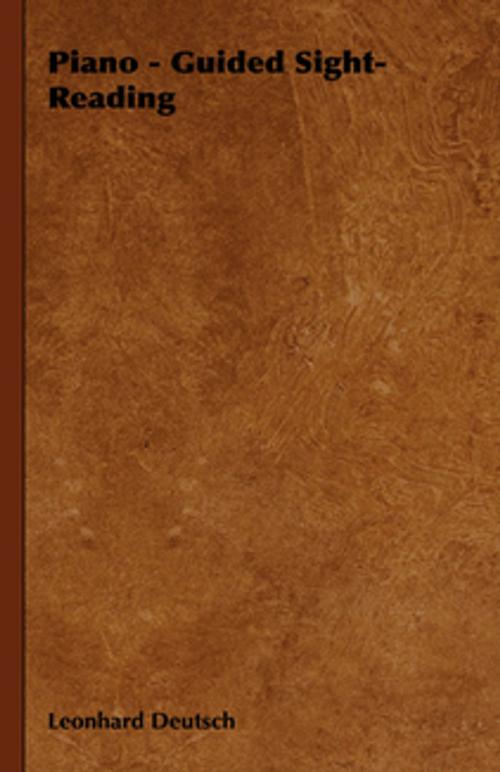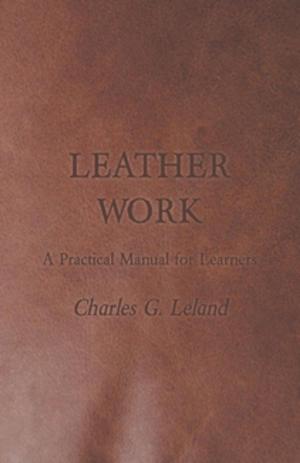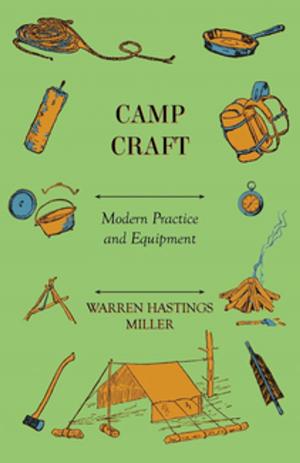Piano - Guided Sight-Reading
Nonfiction, Entertainment, Music, Instruments & Instruction, Techniques, Theory & Criticism| Author: | Leonhard Deutsch | ISBN: | 9781446547205 |
| Publisher: | Read Books Ltd. | Publication: | April 16, 2013 |
| Imprint: | Domville -Fife Press | Language: | English |
| Author: | Leonhard Deutsch |
| ISBN: | 9781446547205 |
| Publisher: | Read Books Ltd. |
| Publication: | April 16, 2013 |
| Imprint: | Domville -Fife Press |
| Language: | English |
Sight-reading is a skill which offers a student access to all music literature; a skill through which he can acquaint himself with any composition, unaided by a teacher. Nor can the ability to sight-read be lost. Once musical notation has become a living picture for the student, it will remain so, and he will at any time afterward be able to perform any music whether he practices regularly or not. Sight-reading does not conflict with repertoire study. On the contrary, a good sight-reader has no trouble in perfecting a piece, and is all the more stimulated to do so. After a student has developed adequate facility in sight-reading, he is ready for unrehearsed or little rehearsed performance; this is especially important for chamber musicians and accompanists. Also, to musicians in other fields who take piano lessons as an additional subject, sight-reading will be very welcome. Thus it is suitable for every piano pupil. For the amateur student, however, the sight-reading method is imperative. Not only does it direct him to an appropriate goal—developing musicianship—but it also helps him to attain it. It is not the privilege of specially talented persons. To play a piano piece correctly at sight implies nothing more than a coordination of the player’s ears, eyes, and hands. Every normal person can develop that coordination, though it may mean hard work for some. The efficacy of sight-reading has been proven by my own teaching experience and by that of my co-workers over a period of a great many years with numerous students of all ages and types. Most of our students would have failed under traditional instruction. Many actually had failed, but they resumed their piano studies with our new approach and then succeeded.
Sight-reading is a skill which offers a student access to all music literature; a skill through which he can acquaint himself with any composition, unaided by a teacher. Nor can the ability to sight-read be lost. Once musical notation has become a living picture for the student, it will remain so, and he will at any time afterward be able to perform any music whether he practices regularly or not. Sight-reading does not conflict with repertoire study. On the contrary, a good sight-reader has no trouble in perfecting a piece, and is all the more stimulated to do so. After a student has developed adequate facility in sight-reading, he is ready for unrehearsed or little rehearsed performance; this is especially important for chamber musicians and accompanists. Also, to musicians in other fields who take piano lessons as an additional subject, sight-reading will be very welcome. Thus it is suitable for every piano pupil. For the amateur student, however, the sight-reading method is imperative. Not only does it direct him to an appropriate goal—developing musicianship—but it also helps him to attain it. It is not the privilege of specially talented persons. To play a piano piece correctly at sight implies nothing more than a coordination of the player’s ears, eyes, and hands. Every normal person can develop that coordination, though it may mean hard work for some. The efficacy of sight-reading has been proven by my own teaching experience and by that of my co-workers over a period of a great many years with numerous students of all ages and types. Most of our students would have failed under traditional instruction. Many actually had failed, but they resumed their piano studies with our new approach and then succeeded.















